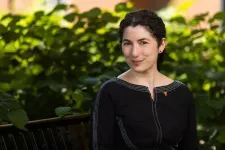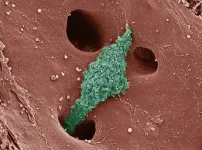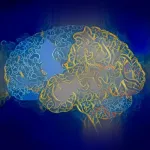(Press-News.org) Professor of Ecology and Evolutionary Biology Nina Fefferman became a mathematician because she loves puzzles. She’s just been awarded $18 million from the U.S. National Science Foundation to solve one puzzle that has the potential to change the world: how, when and why an infection in a population will spread, or cause an epidemic or pandemic, rather than dying out.
Fefferman, director of the National Institute for Modeling Biological Systems and associate director of the UT One Health Initiative at the University of Tennessee, Knoxville, has secured the funding to launch the NSF Center for Analysis and Prediction of Pandemic Expansion (NSF APPEX) in the fall. The multidisciplinary center will focus on identifying the factors that constitute a “perfect storm” for the spread of infection across populations as well as ways humans can prevent or mitigate these threats.
“A lot of pandemic research is immunology and virology, work that happens in medical schools, but that’s only two parts among the very many parts that come together to create a pandemic,” said Fefferman, who has worked in pandemic preparedness for 20 years. “Think about it: A very small portion of an epidemic is what is happening inside one person. Public health is about changing the lives of an entire population.”
The individual pieces of this puzzle could include the built environment, economic resources, media, safety systems engineering, social networks and surveillance along with other fields such as ecology, health care, immunology, pharmaceuticals and virology.
“That’s the point of bringing together a multidisciplinary team of researchers – to gain a globally better understanding of how to interrupt the spread of infection so we help people before they ever get sick,” Fefferman said. “Solving the puzzles you can’t possibly solve by yourself – those are the most fun puzzles. This kind of work allows us to take each other’s blindfolds off.”
The seven-year $18 million grant builds on funding NSF awarded to Fefferman and her co-principal investigators in 2022. That Phase I award, Predicting Emergence in Multidisciplinary Pandemic Tipping-points, or NSF PREEMPT, brought together researchers from 17 different academic disciplines to collaborate on a common problem and see if they could accelerate scientific progress.
“It was a breakneck pace, but we proved it could be done, and the most valuable takeaway is that what came out of it was different than what would have happened if we all worked solely in our own disciplines,” Fefferman said of the 18-month $1 million project. “There was a realization of ‘Wow, this is not what I would have been doing at all.’ It was great to work with people who were excited to do something outside their native areas.”
This approach is not new to UT, which recognizes the inherent value of using creative collisions between disciplines for discovery and problem-solving. The university’s commitment to perspectives and partnerships that stretch thinking in every direction is the foundation of UT’s five innovation gateways, which convene experts, facilities and resources to tackle complex challenges.
Fefferman’s proposal for the new center will expand the multidisciplinary group of researchers from NSF PREEMPT and add members from government, industry and nongovernmental organizations to those from academia. Their focal issue will be identifying the human-driven factors that constitute ideal conditions for pandemic expansion. They will restrict their considerations to the period after the emergence of a pathogen and the ways in which human activities shape and alter the environment in which the pathogen will either die out or spread and cause havoc.
Researchers at NSF APPEX will shift the way they think about pandemics, moving from the focus of traditional outbreak investigations on place- and context-dependent factors. They will instead use a case-control framework, widely employed in medical research, to test hypotheses about the conditions that could be associated with an outbreak. Researchers will be working to identify what they call minimally sufficient sets of conditions that lead to an outbreak. For a set to be considered minimally sufficient, the exclusion of any factor within the set must change the outcome from outbreak expansion to outbreak die-out.
Fefferman will stay on as both the principal investigator for NSF APPEX and director of the center. She is joined by co-principal investigators Lydia Bourouiba, a fluid and mathematical physicist at Massachusetts Institute of Technology; K. Selcuk Candan, a computer scientist at Arizona State University; Sadie Ryan, a medical geographer at the University of Florida; and Shelby Wilson, a mathematician at the Johns Hopkins University Applied Physics Laboratory. The project also involves Clinical Associate Professor Elizabeth Strand of UT’s College of Veterinary Medicine, serving as consilience coordinator, and at least 80 other researchers in addition to postdoctoral staff and graduate students.
“I’m pinching myself that we get to do this unique and special work that will not just shape pandemic science but will shape the way we do multidisciplinary science,” Fefferman said.
NSF APPEX will go beyond research to translate advances into accessible policy recommendations that will help inform decision-makers, train the next generation of researchers and practitioners as native multidisciplinarians, and engage the public in how STEM research helps us understand, prepare for and even prevent pandemics.
“That’s the thing about public health: If you do it right, the public doesn’t know you’re there,” Fefferman said. “If you do it right, it’s easy to forget you ever needed it in the first place.”
END
U.S. National Science Foundation awards UT $18 million to study factors that lead to pandemics
2024-08-22
ELSE PRESS RELEASES FROM THIS DATE:
Mosquitoes sense infrared from body heat to help track humans down
2024-08-22
(Santa Barbara, Calif.) — While a mosquito bite is often no more than a temporary bother, in many parts of the world it can be scary. One mosquito species, Aedes aegypti, spreads the viruses that cause over 100,000,000 cases of dengue, yellow fever, Zika and other diseases every year. Another, Anopheles gambiae, spreads the parasite that causes malaria. The World Health Organization estimates that malaria alone causes more than 400,000 deaths every year. Indeed, their capacity to transmit disease has earned mosquitoes the title of deadliest ...
DOD grants CU researchers $5 Million to study antibiotic-resistant wound infections in Ukraine
2024-08-22
Faculty members in the Department of Emergency Medicine at the University of Colorado School of Medicine have been awarded $5 million by the U.S. Department of Defense to work with partners in Ukraine on clinical and logistical challenges associated with modern large-scale combat operations and prolonged casualty care.
The overarching program — Research and Scalable Infrastructure to Improve Outcomes on the Front Lines of Ukraine by Advancing Treatment and Evaluation (RESOLUTE) — is focusing on collecting data related to antibiotic-resistant wound infections, which have substantially increased amid the military conflict.
The initial project — ...
3D body volume scanner uses AI to help predict metabolic syndrome risk
2024-08-22
ROCHESTER, Minn. — Mayo Clinic researchers are using artificial intelligence (AI) with an advanced 3D body-volume scanner – originally developed for the clothing industry – to help doctors predict metabolic syndrome risk and severity. The combination of tools offers doctors a more precise alternative to other measures of disease risk like body mass index (BMI) and waist-to-hip ratio, according to findings published in the European Heart Journal - Digital Health.
Metabolic syndrome can lead to heart attack, stroke and other serious health issues and affects over a third of the U.S. population and a quarter of people globally. ...
Building a COMPASS to navigate future pandemics
2024-08-22
Viruses like SARS-CoV-2 don’t respect boundaries, moving between species and continents and leaving destruction as they go. Beating the next pathogen with pandemic potential means getting good at crossing borders ourselves — between fields of study, between research universities, and between scientists and the wider community.
An $18 million grant announced by the U.S. National Science Foundation (NSF) will put that goal within reach. The award brings together five universities and more than 20 researchers, academics, and public health experts to establish the Virginia Tech-led Center ...
Macrophage mix helps determine rate and fate of fatty liver disease
2024-08-22
Formerly known as nonalcoholic steatohepatitis, metabolic dysfunction-associated steatohepatitis (MASH) is an inflammatory disease characterized by liver scarring or fibrosis that progressively impairs liver function.
It is a major risk factor for cirrhosis and liver cancer. And because treatment options are limited, MASH is the second leading cause for liver transplants in the United States after cirrhosis caused by chronic hepatitis C infection.
A better understanding of the pathological processes that drive MASH is critical to creating effective treatments. In a new paper published ...
Department of Energy announces $36 million to support energy-relevant research in underrepresented regions of America
2024-08-22
WASHINGTON, D.C. - Ensuring that scientific funding goes to states and territories that have typically received smaller fractions of federal research dollars in the past, the Department of Energy (DOE) today announced $36 million in funding for 39 research projects in 19 states via the Established Program to Stimulate Competitive Research (EPSCoR). The grants connect innovative ideas from scientists at eligible institutions with leading-edge capabilities at the DOE national laboratories.
Supporting scientists while building the expertise and capabilities critical for performing leading research ...
Analysis of 1,500 climate policies reveals only a small fraction achieved significant emission reductions
2024-08-22
A new machine learning analysis has revealed the most effective climate policies out of 1,500 implemented worldwide over the last two decades. Some of the success stories – numbered at about 63 – involve rarely studied policies and unappreciated policy combinations. “Our results provide a clear yet sobering perspective on the policy effort necessary for closing the remaining emissions gap of 23 billion tons carbon dioxide (CO2) by 2023,” write the authors. To achieve the Paris Agreement’s climate targets, it is essential to know which ...
Fatty-acid derived polymers yield recyclable and highly versatile adhesives
2024-08-22
Researchers have presented a new family of polymer adhesives that offer a sustainable and recyclable alternative to conventional polymer adhesives and can be used across a wide range of applications, from industrial adhesives to surgical superglues. The new chemical approach to aLA polymerization addresses the performance and environmental challenges of traditional polymers, providing environmentally friendly adhesive solutions. Polymer adhesives are ubiquitous in modern life and are widely used in many medical, consumer, and industrial products. Given this diversity, each adhesive material is often tailored ...
Governance needed to ensure biosecurity of biological AI models
2024-08-22
Concerns over the biosecurity risks posed by artificial intelligence (AI) models in biology continue to grow. Amid this concern, Doni Bloomfield and colleagues argue, in a Policy Forum, for improved governance and pre-release safety evaluations of new models in order to mitigate potential threats. “We propose that national governments, including the United States, pass legislation and set mandatory rules that will prevent advanced biological models from substantially contributing to large-scale dangers, such as the creation of novel or enhanced pathogens ...
Spontaneous transfer of mitochondrial DNA into the nuclear genomes in the human brain over the individual’s lifespan
2024-08-22
Somatic nuclear mitochondrial DNA (Numt) insertions are mito-nuclear gene transfer events that can arise in the germline and in cancer. This study shows that Numt insertions arise spontaneously and accumulate in brain tissues during development or over the human lifespan.
#####
In your coverage, please use this URL to provide access to the freely available paper in PLOS Biology: http://journals.plos.org/plosbiology/article?id=10.1371/journal.pbio.3002723
Article Title: Somatic nuclear mitochondrial DNA insertions are prevalent in the human brain and accumulate over time in fibroblasts
Author Countries: United States
Funding: see manuscript END ...






